Table of Contents
What is Online Social Networks (OSN)?
Proliferation of the Online Social Networks has led to the spread of user-generated content, thus enabling information sharing across networks of users. Increased accessibility of the web, especially following the introduction of mobile internet has enabled round the clock online presence for most users.
This is particularly encouraging for active OSN users, thus letting them build an online mesh of relationships. The emergence of OSNs as the primary tool for connecting people implies that these online structures will increasingly mirror real-life society and relationships.
The major attraction of OSN compared to e-mails is that users are able to share any content with a group or network of acquaintances (commonly known as friends) and every user is able to control his or her social network. Essentially, an online social network site is one that allows users to establish their own network of connections with people whom they wish to share profile information, news, status updates, or media content such as photos and video. OSNs consist of three essential components:
- User profile: a public or semi‐public profile defined by user
- Social network: the set of connections made by a user to other users within the OSN
- Visualization of social network: the explicit view of a user’s own connections and connections of other users.
The idea of OSN is not an exclusive by-product of the Social Web because the first ever prominent OSN site called SixDegrees.com was launched in 1997, i.e. several years prior to the evolution of the Social Web.
The name is related to the six degrees of separation concept: a theory that states anyone can be connected to any other person through a chain of acquaintances of not more than five mediators. Unfortunately, the site could not evolve into a successful business and was shut down in 2000.
The founder of SixDegrees.com attributes its demise to the fact that the site was ahead of its time. However, the OSN revolution witnessed a rebirth with the proliferation of the Social Web, several years later.
The remainder of this article describes architectural details and core components or services of OSN sites in detail.
Architectural Details of an OSN site
An OSN architecture consists of the following layers:
- Data Storage Layer: Consists of two components, i.e. the Storage Manager and Data Store. Storage Manager is responsible for efficient storage of social graphs and also to handle increases in database loads using distributed memory caching. The Data Store comprises of storage elements to store OSN information items such as multimedia items and user profile data.
- Content Management Layer: Handles three main tasks. First task is content aggregation from remote sites. Second task is the maintenance and retrieval of social content graph via the Data Manager. Third task is the creation and maintenance of access control scheme for users.
- Application Layer: Consists of the application manager which provides interface between users and the various features contained in the OSN, specifically in the content layer and data layer.
An OSN platform consists of multiple application servers. Every application server provides a set of services and APIs. A load balancer is used to monitor the application servers, balance the load of HTTP requests, forward user requests to the appropriate application servers and handle failovers. Apart from the usual HTTP servers, the following servers are also used as part of an OSN platform:
- Graph servers: To track and manage social connections between users.
- Cache servers: To speed up Web applications by alleviating the load of application servers.
- Content Distribution Network (CDN) servers: To serve small portions of content such as photos to be accessed by a large number of users. Examples of CDN servers include Akamai and Cloud Infrastructures.
An illustration of the aforementioned OSN architecture is shown below:
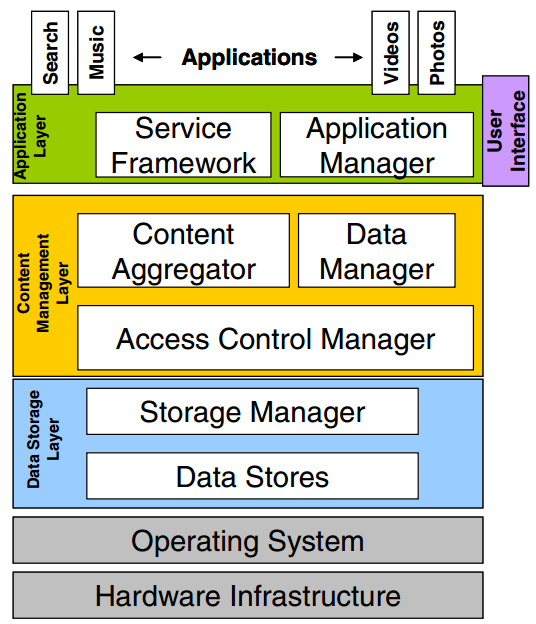
Figure 1: Architecture of a typical OSN
Core Services of an OSN site
The core components or services of an OSN site are as follows:
- Identification and Profile Service
- Social Graph Service
- Social Presence Services
- Social Interaction Services
Further details about each component:
Identification and Profile Service
The profile service is a core component of OSN that helps users to manage their profile and identity on the OSN. In most OSNs, users are required to fill out forms with a set of fields related to their personal information, such as name, gender, date of birth and interests. The profile is generated based on inputs to the profile form. Profile photo uploading is also a common feature in most SNs.
The profile service also controls profile visibility. For example, basic profiles on LinkedIn and Facebook are publicly visible and also can be crawled by search engines, by default.
Therefore, such profiles can be viewed even by those who have no connection with the user. Different OSNs provide different ways or settings to users of how their profile display should be controlled. For example, Facebook and Myspace allow users to choose whether their profile should be publicly visible or visible to friends only.
One of the main problems with user profiling on OSNs is the creation of fake profile, i.e. people masquerading as prominent politicians or celebrities. To counter this issue, OSNs such as Facebook and Twitter provide an account verification mechanism, where a verified account badge is shown on the profile of prominent people.
Social Graph Service (SGS)
The purpose of SGS is to build and maintain connections between users who share relationships with one another. The SGS consists of the following components:
- Connection component: connection could be unidirectional or bidirectional. Visualizing connections within a user’s extended social network enables him or her to discover previously unknown connections, such as friend of a friend.
- Reputation component: various metrics are used to express the reputation of an individual. For example, Orkut once used to have a karma points system that was used to provide rating about friends, but the feature was abandoned due to unpopularity.
- Search component: social search leverages social distances to produce search results. For example, searching for jobs on LinkedIn would provide results ordered by social distance where job providers known to the user would be ranked on top.
Social Presence Services (SPS)
Social Presence Services in OSNs are used by users to enhance their profiles. This may include adding multimedia content or modifying the look and feel of their page. The manner according to which users use SPS could hint at the type of personality of a user. For example, a user who applies a particular theme to his or her page is likely to use their favorite color. There are two types of mechanisms for Social Presence Services:
- User-generated content (UGC): most of the contents posted on OSN by users are UGCs such as wiki entries, blog posts, microblog posts, social bookmarks and social news. The contents posted by the user would reflect the user’s interest in some ways.
- Context sensitivity: this feature started to gain importance due to usage of mobile devices in social networking. For example, the GPS feature in a user’s mobile device can adapt a user’s OSN contents to present information according to the user’s current location.
Social Interaction Services
Social presence services are content-focused, while social interaction services are focused on activities that improve the closeness between users in a community. Social interaction services include the following features:
- Multiplayer Online Games: refers to games played live by users who usually belong to a common social network, such as friends.
- Reviews and Opinions: reviews and opinions posted by a user to his or her friends and vice versa would be of great help in comparing products to make purchase decisions.
- Finance: financial services such as micropayments, i.e. payments involving small amounts of money can also be promoted via OSN references.
- Groups: small social networks of users could merge to form larger groups, especially when all the members are driven by common goals. OSN based group formation works in such a way where participation begets more participation.
Want to learn more about digital marketing? Check out these awesome articles:


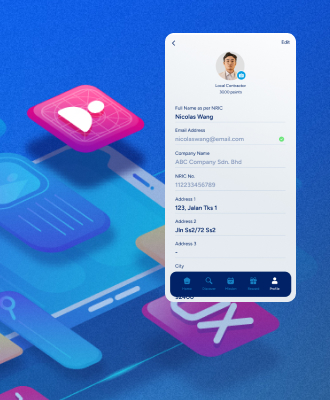
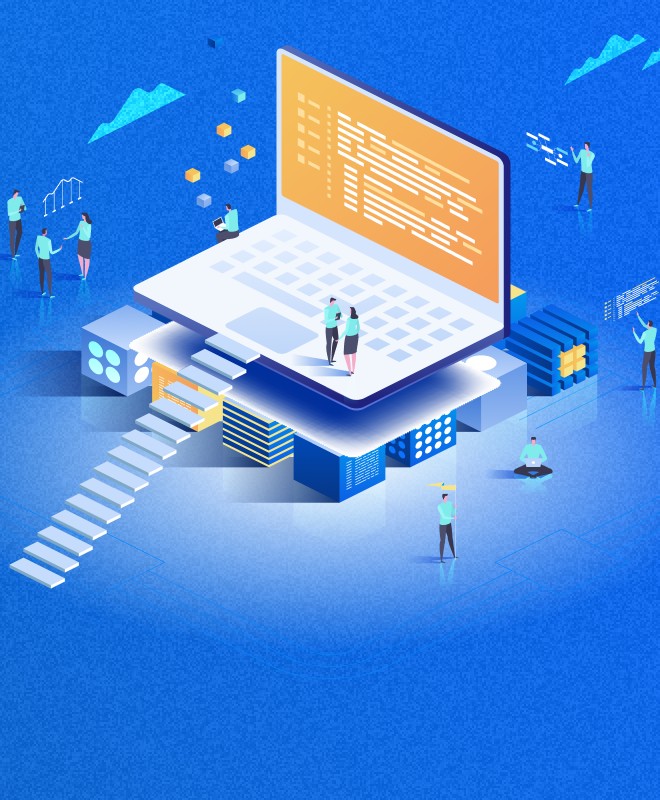
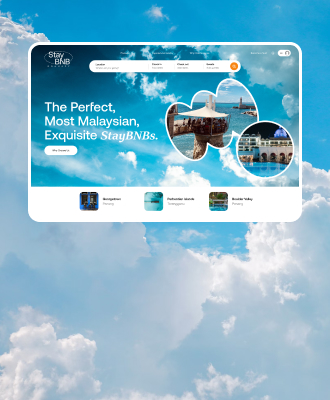

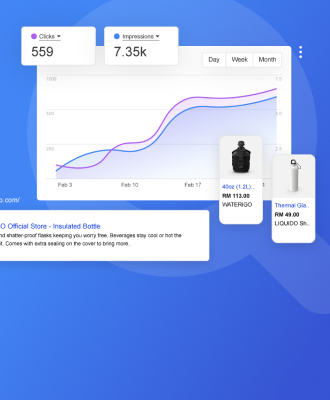





Leave A Comment